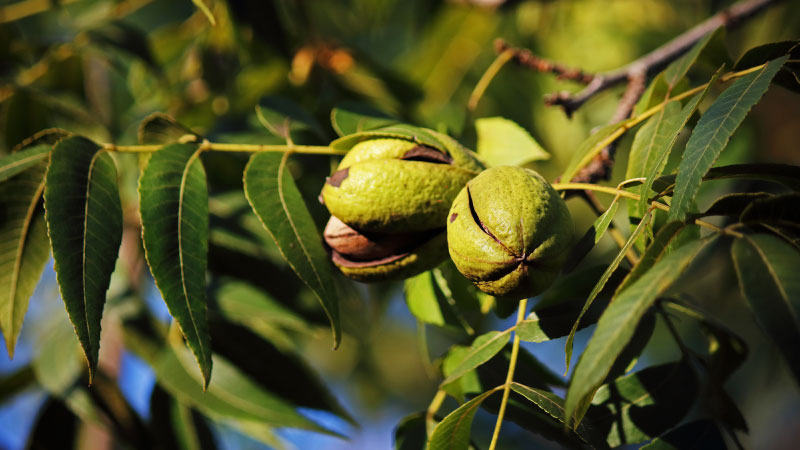Water Management Tips For Eastern Vineyards
Traditionally, grape growers in the Midwest and Eastern U.S. have not really worried about water management in their vineyards. Because of the amount of rain that falls east of the Rocky Mountains during the growing season, growers have always assumed that their vineyards had adequate water in the soil (or more!), and in most years they were right.
But as more research has been done concerning water use by vineyards in this part of the country, we are starting to understand that water management is something that can have a significant impact on vine health and fruit quality. For example, in a past study in the Finger Lakes, Cornell University researchers found that:
- Irrigated vines had fruit with higher Brix and yeast available nitrogen in dry years;
- Bud injury was reduced in the irrigated vines in the winter compared to those that were not irrigated; and
- Vines that were irrigated in dry years had higher yields, when irrigation wasn’t used at all, than those that did not receive irrigation.
- In many years, Eastern growing regions will experience periods of at least a few weeks with high temperatures and little, if any, rainfall. Combine this with the fact that this seems to happen when vine canopies are fully developed, and need high amounts of water, and vines run the risk of going into drought stress.
- Equipment such as pressure bombs and porometers are available which can directly measure how much water stress a vine is under, but these can be somewhat expensive, can have a steep learning curve, and may take more time to use than most growers have during the season.
Fortunately, there is a quick, low-tech test to get a “feel” for whether or not a vine is water stressed (see “Getting A ‘Feel’ For Water Stress”). This test works because, as vines start to undergo water stress, their stomates start to close, which reduces the amount of water that moves through the plant. This water movement, called evaporative cooling, helps to keep the vine cool in order for its physiological processes to work properly, but under water stress this cooling effect is reduced, and the leaves heat up.
Stress Reducers
If symptoms of water stress are found in the vineyard, growers have a couple of management options available to them:
- Irrigation — This might be the best “management” option, but many vineyards in the East do not have irrigation. Guidance for irrigation use in the East is not as developed as in the West, but fully developed Concord vines, which have large canopies, might use about 1 acre-inch of water per week (about 27,000 gallons per acre) on a “normal” summer day in New York. Vines with smaller canopies, such as vinifera varieties on VSP, might use 50% to 60% of that amount.
- Eliminate weed competition — This tactic can be very effective, as living ground covers can compete strongly with grapevine roots for water and nutrients. Eliminating weed and cover crop competition by herbicide application or cultivation for one month can be the equivalent of applying 1.5 inches to 2 inches of water by irrigation.
- Apply mulch to row middles — Unrolling round hay bales down row middles can both help to reduce competition from weeds and cover crops and help preserve soil moisture. It also has the added benefit of adding organic matter to soils where that may be an issue.
The use of these tools to reduce water stress is most important in the post-veraison period, as fruit quality can be seriously compromised due to reduced photosynthetic activity and other metabolic processes that produce many of the compounds that are important in juice and wine quality. However, mild or moderate water stress may actually be desirable before veraison in high vigor situations, in order to reduce shoot growth.
Most of the models looking at future climate changes in this part of the country predict greater extremes in precipitation in the future. If this is the case, growers’ ability to manage their vineyards’ water status may mean the difference between having a vineyard that struggles to produce an acceptable crop and one with high-quality sustainable fruit production.
I want to thank Dr. Alan Lakso, professor of plant physiology at Cornell University, for contributing information for this article.
Getting A “Feel” For Water Stress
The following steps to determining the level of water stress in grapevines are adapted from Alan Lakso’s “Getting A ‘Feel’ for Water Stress” in the July 2002 issue of Finger Lakes Vineyard Notes:
Step 1: Do the test at mid-day or in the afternoon of a sunny, calm day.
Step 2: Take a few large leaves and lay them in the sun. Feel them every few minutes for 15 to 20 minutes to get a feel for how hot they can get.
Step 3: Feel shaded leaves on the canopy exterior as a reference (they should be near the air temperature).
Step 4: Now feel larger, sun-exposed leaves on the canopy exterior between your thumb and fingers. Exposed leaves will be a little warmer even without any stress, but will be significantly warmer if the vine is water stressed.









